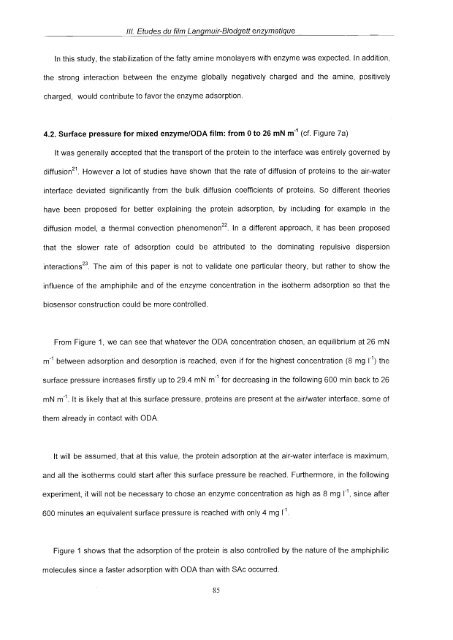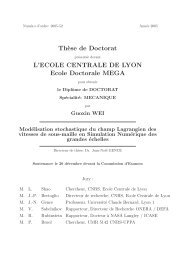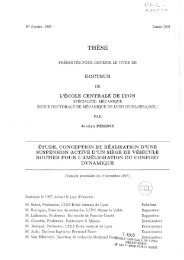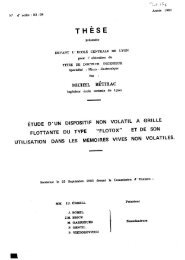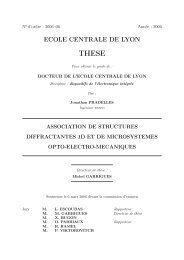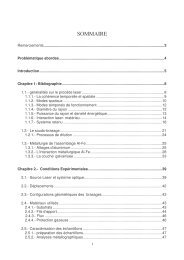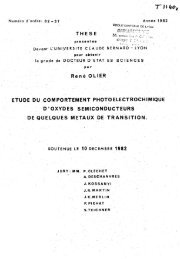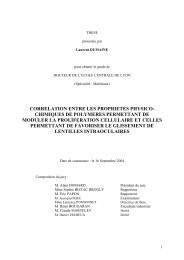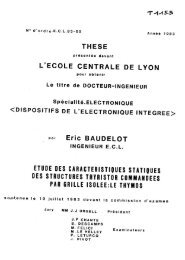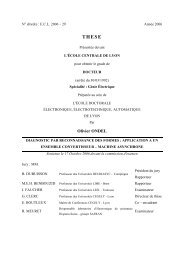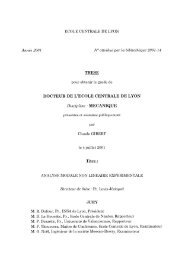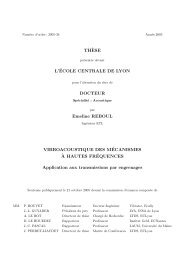Etude de différentes méthodes de biofonctionnalisation pour la ...
Etude de différentes méthodes de biofonctionnalisation pour la ...
Etude de différentes méthodes de biofonctionnalisation pour la ...
Create successful ePaper yourself
Turn your PDF publications into a flip-book with our unique Google optimized e-Paper software.
III. <strong>Etu<strong>de</strong></strong>s du film Lan gmuir-Blodgett enzymatique<br />
In this study, the stabilization of the fatty amine mono<strong>la</strong>yers with enzyme was expected. In addition,<br />
the strong interaction between the enzyme globally negatively charged and the amine, positively<br />
charged, would contribute to favor the enzyme adsorption.<br />
4.2. Surface pressure for mixed enzyme/ODA film: from O to 26 mN m (cf. Figure 7a)<br />
lt was generally accepted that the transport of the protein to the interface was entirely governed by<br />
diffusion21. However a lot of studies have shown that the rate of diffusion of proteins to the air-water<br />
interface <strong>de</strong>viated significantly from the bulk diffusion coefficients of proteins. So different theories<br />
have been proposed for better exp<strong>la</strong>ining the protein adsorption, by including for example in the<br />
diffusion mo<strong>de</strong>l, a thermal convection phenomenon22. In a different approach, it has been proposed<br />
that the slower rate of adsorption could be attributed<br />
to the dominating repulsive dispersion<br />
interactions23. The aim of this paper is not to validate one particu<strong>la</strong>r theory, but rather to show the<br />
influence of the amphiphile and of the enzyme concentration in the isotherm adsorption so that the<br />
biosensor construction could be more controlled.<br />
From Figure 1, we can see that whatever the ODA concentration chosen, an equilibrium at 26 mN<br />
m1 between adsorption and <strong>de</strong>sorption is reached, even if for the highest concentration (8 mg 11) the<br />
surface pressure increases firstly up to 29.4 mN m' for <strong>de</strong>creasing in the following 600 min back to 26<br />
mN m1. lt is likely that at this surface pressure, proteins are present at the air/water interface, some of<br />
them already in contact with ODA.<br />
It will be assumed, that at this value, the protein adsorption at the air-water interface is maximum,<br />
and all the isotherms could start after this surface pressure be reached. Furthermore, in the following<br />
experiment, it will not be necessary to chose an enzyme concentration as high as 8 mg í, since after<br />
600 minutes an equivalent surface pressure is reached with only 4 mg 11.<br />
Figure 1 shows that the adsorption of the protein is also controlled by the nature of the amphiphilic<br />
molecules since a faster adsorption with ODA than with SAc occurred.<br />
85


